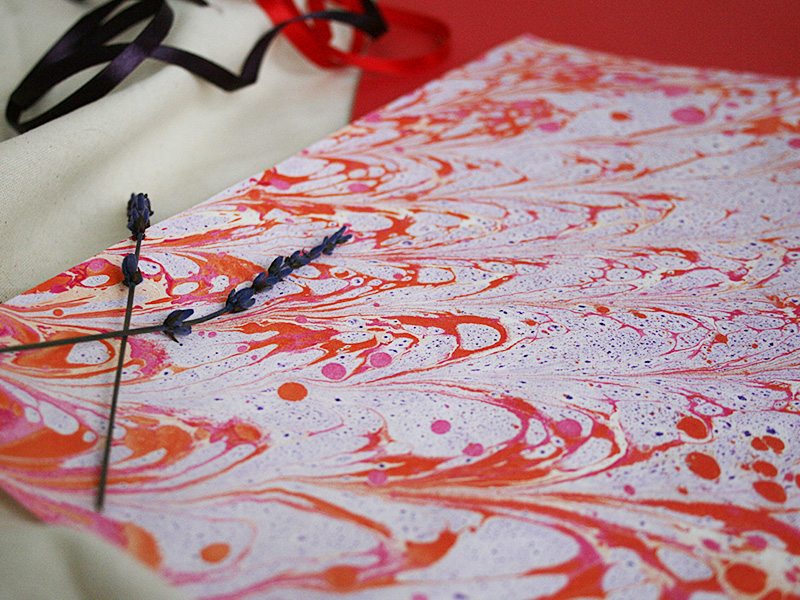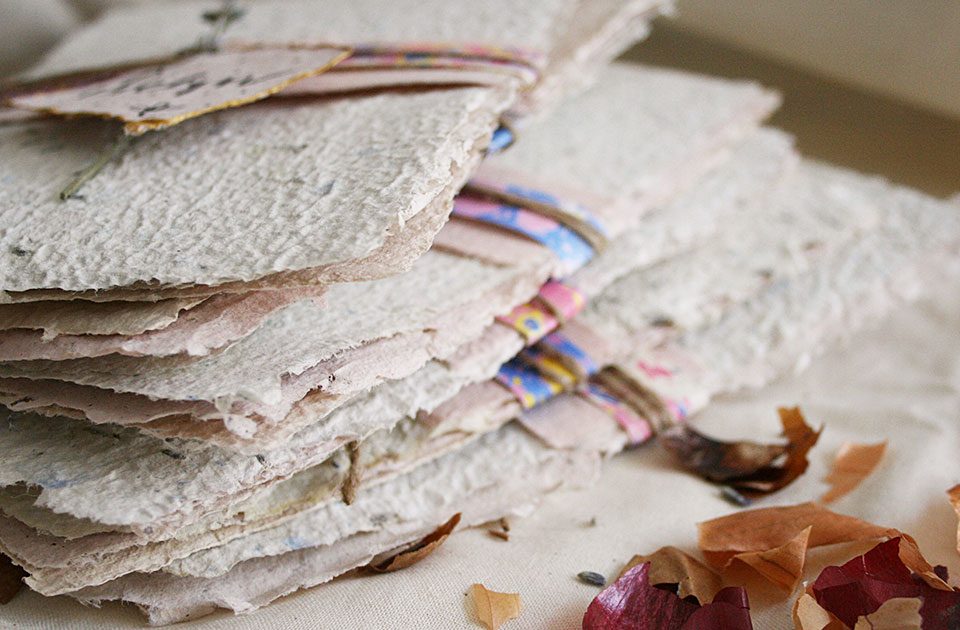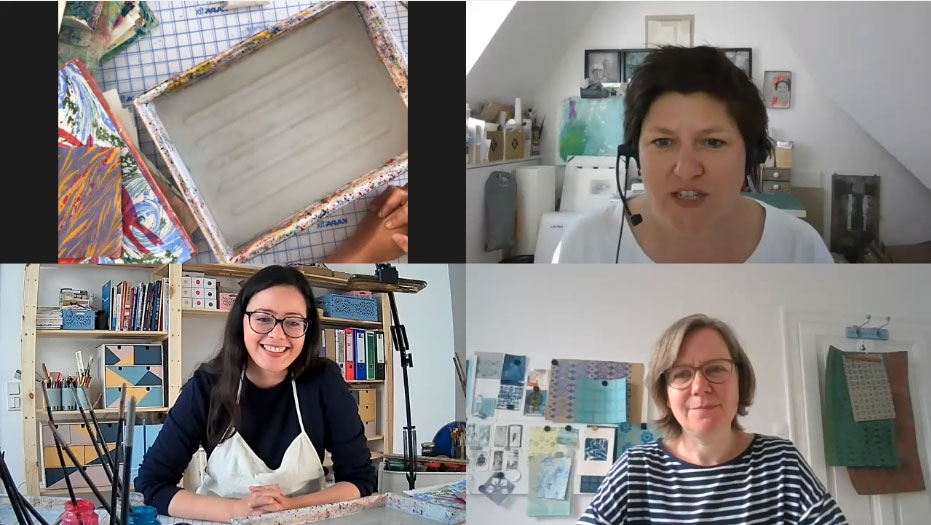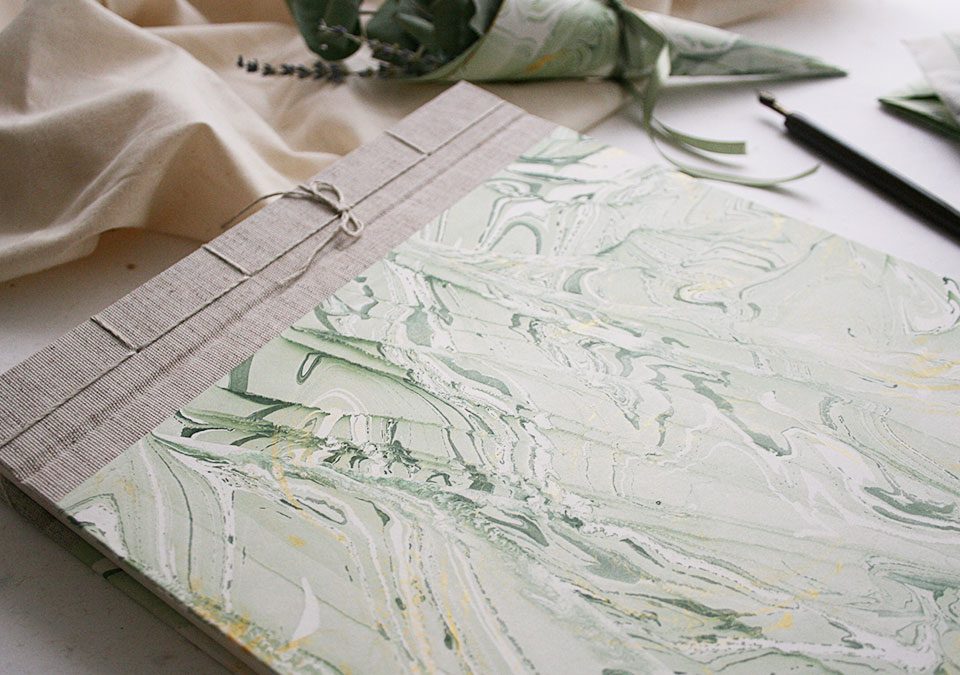
3 Reasons To Become A Patron
22/12/2020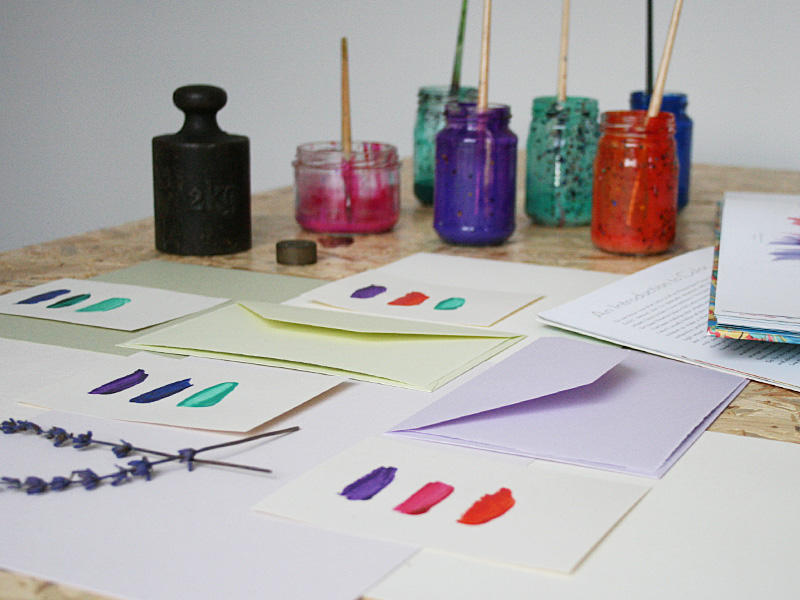
How-To: Colour Palettes For Marbling Projects
13/04/2021It’s been a while since the last time I shared my marbling paper tests here. As a matter of fact, I have been running lots of paper tests since then, not just for my marbling workshops, but also for my Patreon community and other collaborations. One of the latest tests I ran was for a guest blog I was invited to write for: Papier Direkt Blog. Papier Direkt is an online shop from Germany that specializes in high-quality paper stationery for businesses and artists. They sent me samples of some of their papers and I was able to run some tests to find out if those papers were suitable for marbling.
Today I’m sharing the results of that test, as well as a couple of new findings with you. Read below the list of my new favourite papers for marbling, which comes to complement my previous Top 5 papers For Marbling post. Ready?
All recommendations made in this post are based on my own opinion and experience. The papers were provided by Papier Direkt as a PR-sample.
-
What is the best paper for marbling?
There is not just one answer to this question. Finding the right paper for marbling will depend on various factors, like which marbling paints you are using or what you want to do with that paper after marbling it. However, there are a couple of qualities that a paper should have in order to qualify as suitable for marbling:
-
- The paper should preferably be uncoated, non-glossy – otherwise, the paint might not stick on it
- Papers from 80 to 130 gsm are easier to marble, as they are flexible and easier to place onto the marbling bath
- White papers will make your colours show up brighter, however, you can use coloured paper, too
-
How to find out if a paper is suitable for marbling?
If you got a paper that matches all of the qualities mentioned above, the probability that it will be suitable for marbling is high. Anyway, when it comes to marbling paper, you never know. Therefore I recommend running several tests and taking notes of all of the steps you followed, so you can evaluate at the end of your test, whether that paper is indeed suitable for marbling, or not.
Test any paper you have at home. If you want or have to buy new paper, you can first buy a few sheets and once you have tested if it’s suitable for marbling, you can buy a big package. If you are buying the paper from a paper supplier, you might have the chance to ask for a sample book or some sample sheets of the papers you are interested in.
Once you have the paper, you can start running your tests. Make sure to mark the backside of each paper and note all important information (e.g. the name of the paper, the thickness, if you mordant the paper or not…) You won’t have time or will forget to write down all these details while you are marbling.
-
Testing sample papers from Papier Direkt: learnings & findings
Back in January, the team of Papier Direkt Blog contacted me and asked whether I would like to write a guest post about marbling for their blog. I was so flattered that they liked my work and considered me for this project, so of course, I said yes. They immediately sent me a pack with some paper samples from the papers we thought would be most suitable for marbling. In this pack, there was a mix of papers from different brands, most of them in white or creme and some coloured sheets, too.
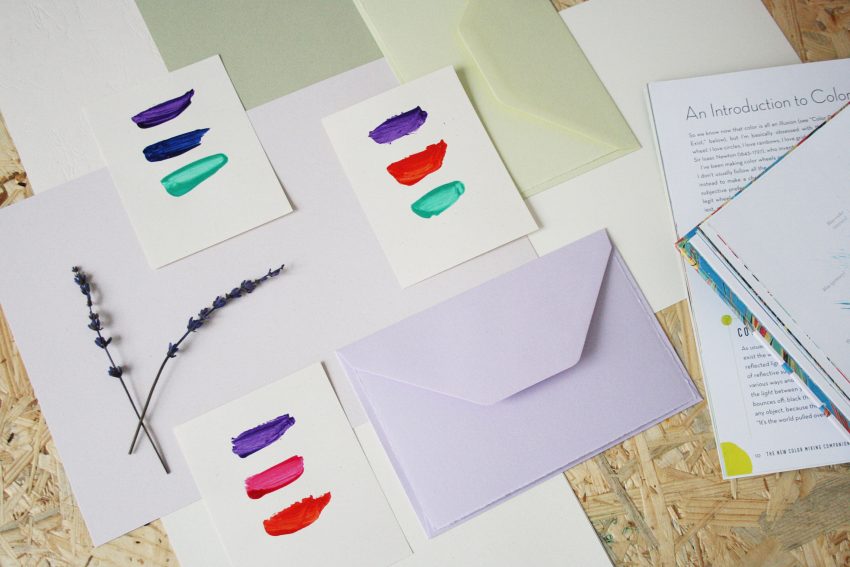
All in all, I had a pretty good experience testing these papers. Although I had some troubles during the marbling session, as I ran the test right in the middle of the coldest week in January. The room temperature can indeed affect the performance of a marbling session, as some paints might not spread properly.
-
Mordant the paper: yes or no?
Since I used DEKA Marble paints for this test, I didn’t mordant all the papers. Depending on the paint you are using, you might need to mordant your paper with a solution of water and alum. DEKA Marble paints can be used on non-mordant paper, although I sometimes recommend mordanting the paper beforehand, especially when you are working with big sheets of paper (from A3 and bigger).
With regards to this test, I really didn’t notice a big difference between the papers I mordant and the papers that I directly marbled without any previous mordant coat. On some of them, the colours washed-off a little bit, but I cannot be totally sure, whether it was a problem with the paint itself or the paper.
-
5 quality papers suitable for marbling
I tested different papers from the sample package I received from Papier Direkt, but my favourite ones are these. Not all of them are 100% suitable for marbling, but I love their structure and look. Furthermore, some of them are great for bookbinding, too.
-
-
Rives Design
-
This paper has a filigree structure, something like linen paper. It looks very elegant and of high-quality, therefore it’s used for business and even wedding stationery. I tested this paper in the 120 gsm version in soft-creme nature colour. Rives Design is also available in white and ivory and higher grammage. In the picture below you can see one of the papers I marbled, the colours seem bright and bold. Rives Design paper can be used for bookbinding too, e.g. for folding the covers of a hardcover book.
-
-
Clairefontaine leather-effect binding paper
-
I didn’t know that Clairefontaine had such a leather-effect paper which is ideal for e.g. binding a Coptic book. Clairefontaine leather-effect paper is available in a range of different colours and in 240gsm and 270 gsm. I tested the 270 gsm version in white and creme, as the other coloured papers were too dark for marbling.
It was a bit difficult to place the paper onto the marbling bath, as it is quite thick, but the final result was beautiful. Below you can see two examples: one in a minimalist one-colour pattern and a Git-Gel design in three colours.
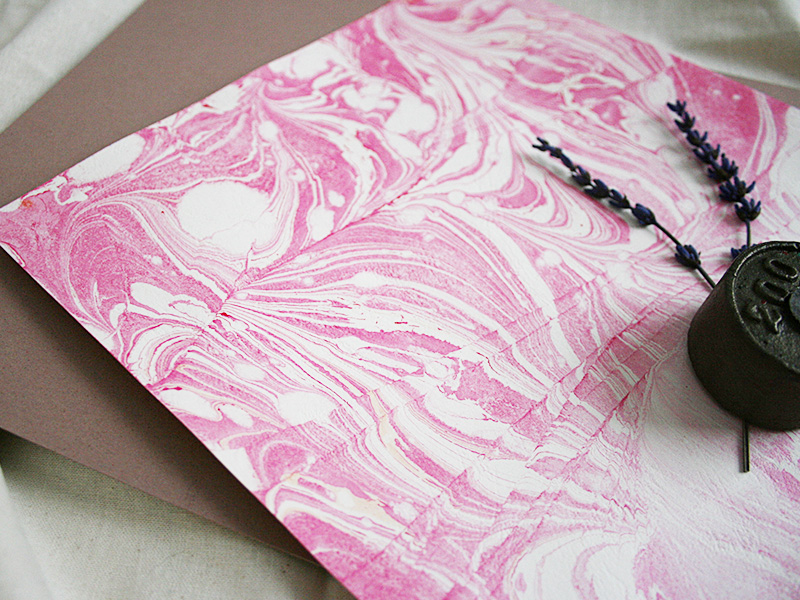
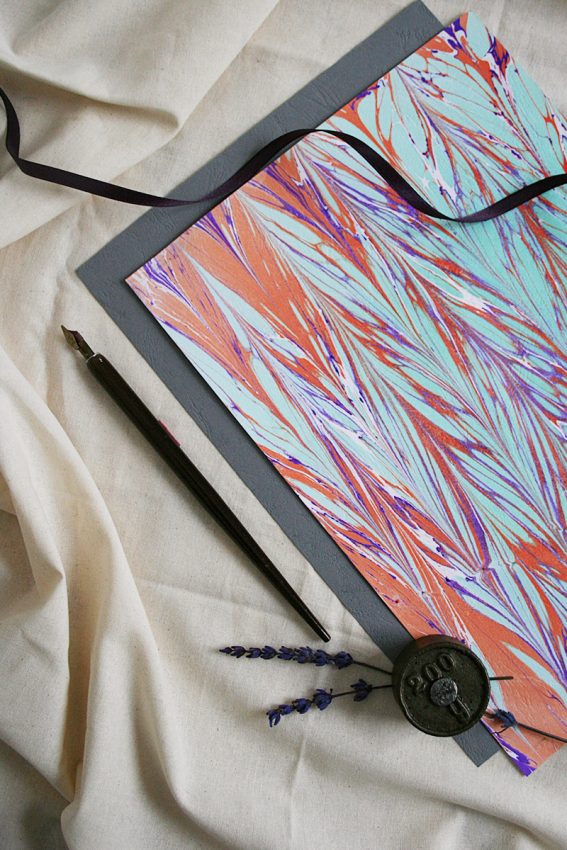
-
-
Munken Pure
-
I started working with Munken Pure paper last summer, so I knew that this paper would be suitable for marbling before this test. Still, I got to test this paper in other grammages, like the one shown in the picture below. This was a Munke Pure in creme and 170 gsm. Usually, I work with Munken paper in 100 gsm for my hand-marbled paper sets and I mordant it, so the colours show up brighter and more defined.

-
-
Crush Grape
-
I mentioned before that not all the papers were 100% suitable for marbling, but you could still give them a try. This is the case of Crush, an eco-friendly paper from Favini, made with up to 15% residues of organic products. Some of these organic by-products are grapes, citrus and kiwi fruits among others. Therefore their names: Crush Grape, Crush Citrus, Crush Olive… I have to say, even if this paper isn’t 100% suitable for marbling, I’m glad I got to know it!
This paper has a rough texture and because it’s made with residues from organic products, a particular look, too. Below you can see the test I did on Crush Grape 120 gsm. The colours show softer and a bit washed-off. Furthermore, the paper tended to break on the corners while I tried to rinse it after marbling.

-
Echt Bütten – handmade paper
“Büttenpapier” is a fine high-quality paper with a particular deckle edge or irregular torn edge. I was expecting that this paper would be suitable for marbling, but it didn’t convince me 100%. The surface of the paper was too soft and the paint washed-off a little bit. I have worked with “Büttenpapier” before, but with a rougher version of it with a rather ribbed surface. Although the colours might not be as defined as in the other examples (e.g. on the Clairefontaine leather-effect paper), I liked the fine and delicate look of this paper.

These aren’t all the papers I have tested so far. The list is growing slowly, but for today this is a good start. As you can see, you can use almost any kind of paper for marbling, as long as it isn’t coated. Whether you like the final look or not, this will depend on your own taste and expectations. And of course, what you want to use the paper for. In my case, the papers I use for bookbinding or selling have to be of the highest quality possible. But I would give a chance to other papers, too, e.g. for my own experiments or mixed-media art projects.
If you are looking for more advice on marbling techniques, you can join one of my webinars and online workshops or become part of my international community on Patreon!
Feel free to drop me a message via the contact form or on my Instagram account if you have questions about this blog post or have other paper recommendations.
Your crafty fellow,
Karen


